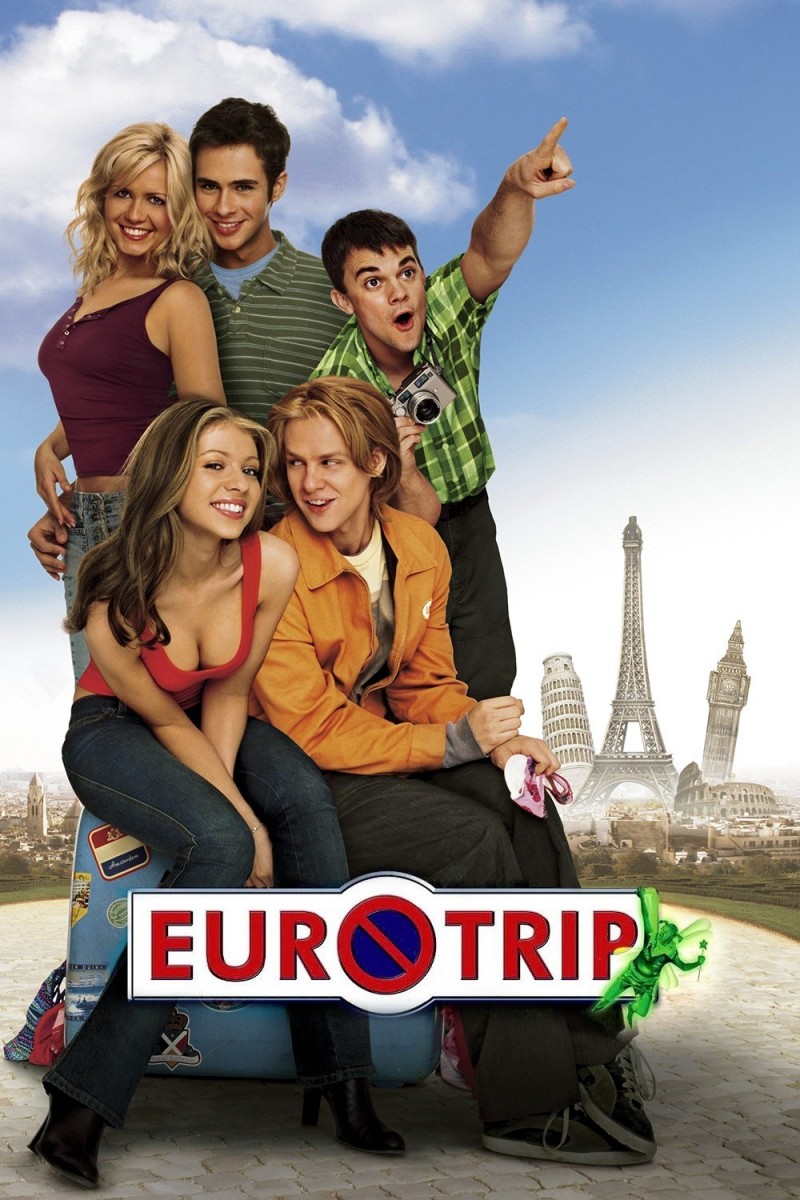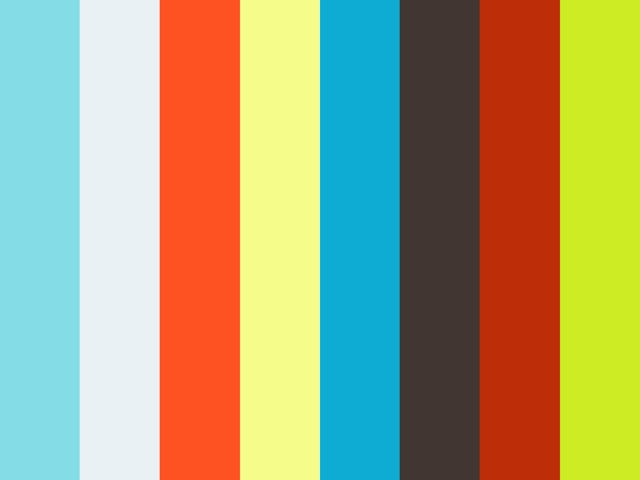I was persuaded to hire someone to do the narration by my tutor, Jimmy. Lizzy Holbrook was the first and only one who volunteered to do it, because she started to learn Japanese and had a interest in Asian cultures. Despite she didn't have enough time to read my script before the recording, she did have a really good voice which I think hers was better than my voice.
Writer's Block production stills
Profusion Showcase, Center Space Gallery in Bristol
Research on 'Miyazaki: Auteur of Animation'
I had researched through books and internet about Hayao Miyazaki, his filmography and the auteur theory. This was the biggest challenge I had so far. I enjoyed watching and exploring his films, and I couldn't stop thinking about them including Spirited Away (2001), Laputa: Castle in the Sky (1986) and My Neighbour Totoro (1988).
A day of job shadowing on Digital Village, BBC Bristol
My mentor, Tina, who had a friend, Brenda Sweet working in BBC Bristol. She contacted her, so we could ask the post-production facility, the Digiatl Village, for work experience. As Tina got the contact to Jane Greenwood, who is in charge of the Digital Village, we managed to arrange a day visit on 3rd March. Tina was also arranged to have a day off, so she could pick up from my flat to Bristol.
Hyena out now in cinemas
I have seen Hyena (2014), which screened as part of the Shorts2Features strand, at the Encounters Short Film and Animation Festival on 17th September 2014. A film about bent cops, Albanians, Turks and trafficking going on in West London. It was premiered at the Edinburgh International Film Festival 2014 before and the reason for Hyena linked to Shorts2Features strand was that Gerard Johnson (the director) made two short films; one of them led to the 2009 remake of Tony, his first feature-length film.
Research on Femmes de Films supercut
Beyond Clueless review
A visit to the production of BBC/HBO's A Casual Vacancy
I had a chance to witness the production of the three-part drama, A Casual Vacancy. On 17th August 2014, I came to the Pudding Hill Farm, Arlington near Bibury where the crew were filming the first shots for the opening sequence. They had a octocopter, which is a helicopter that has eight arm frames and propellers. It has a Blackmagic camera attached to which depicts a type of steadicam, a camera that gets a very static shots. These octocopter shots have to depict the countryside and the boys ride on their bikes. I even imagined and expected what the shots look like.
UPDATE: Vote to choose the best version of Feminism supercut
The fourth preview of my supercut is now on Vimeo and please vote polldaddy.com/poll/8606636/. I would appreciate this if you do.
Vote to choose the best version of Feminism supercut
As I was finishing my 90 second supercut, I looked through the music samples however three of them are well-suited but different. As I couldn't choose which one, I took an idea of editing and releasing three distinctive previews of my supercut, and I would set up a poll where the public would choose. The poll would be closed in two weeks after the publication and I will reveal the results, along with the final cut. I would like to have your feedback on any of the three previews, and it's up to you to decide which one would be the best version of my supercut.
Preview screening of Beyond Clueless + Q&A with Charlie Lyne
Beyond Clueless on screen
As a fan of documentary genre in film and TV, I got persuaded by Richard (my tutor) to see the recent documentary film Beyond Clueless at The Cube cinema in Bristol. This is Charlie Lyne's directorial debut and he currently work as a journalist (see his website and Twitter). The film had been show in several festivals including Sheffield Doc Fest and SXSW Festival last year.
When I booked a ticket, I was stunned that there were 20 tickets left and I could tell the film gained popularlity from my generation aka The Millennial Generation (birth years from early 1980s to early 2000s). This was because teen movies were the products of our time.
From Instagram
When I arrived to the Cube, I noticed two girls dressed as school girls in uniforms. I saw a sign (photo on left) saying 'Tonight's Screening is completely sold out' on the front door. At the bar, there were red plastic cups and 'To-make' flower corsages, commonly used for American proms. These were the iconography of a teen film genre, which we would recognise immediately while watching a teen movie. I did managed to make one however after putting it on my wrist, the flower had chopped off itself.
You see my hand with a pink flower on top while Sarah tries to put my corsage on [Flickr]
Flower corsages
Anyway, I managed to get a good seat where I took a photo of Beyond Clueless title on screen. There were two people, possibly working for the film, wore high school jackets with Beyond Clueless on the back.
During the screening, there were interesting parts in the film especially a contemporary documentary film/TV genre, the film essay. I would talk about this in detail in the next post.
Q&A with Charlie Lyne [Flickr]
After the screening, we had a Q&A with Charlie Lyne and he looked young in my first impression. I wrote down everything on my notepad as much as possible; the interviewer was the first person to ask the questions. I was prepared to ask Charlie the question about the copyright clearance in his film. However one of the audience asked this first, there were information related to Charlie's answer to the copyright clearance. One was in the Kickstarter page and another that Sarah (my step mum who was there for the screening) told me about. She said that giving a locked down version of the film - the timing of clips to the copyright owners e.g. using 6 mins 34 seconds of the footage from one film - the copyright owners would depict the fee for example; $12,000 or $500 per 3 minutes. Another thing she said that using lesser known films and music like Summer Camp for Beyond Clueless are cheaper.
Charlie Lyne [Flickr]
Anyway, Charlie answered the first question "Why did he make a film about teen films?". His answer was that it was interested to watch teen movies back and also embrace them, and the Millennial Generation including myself would remember them too. He states that he used all of over 200 DVDs with a small number of people working and watching for hours at his home. During the process of research and pre-production, they wrote notes down for example; a swimming pool scenes from films such as Swimfan and Wild Things, and they also used a pin-board to scatter ideas for the film.
Charlie talked about his mate or someone told him that he/she has seen Godzilla (2014) and asked him "Have you seen it?" Charlie answered "Well, no, I have seen Cruel Intentions 2 twice" and the audience found this hilarious. I agreed with his point of what he just said, made himself an outsider but it doesn't matter to me.
Nancy (Fairuza Balk) from The Craft
Hiring Fairuza Balk (who starred in The Craft) as the film's narrator is a funny story to tell. They spent months trying to contact her, three months to contact her agent but it backfired. Luckily, they noticed Fairuza selling her Vestacha International candle line online and they send an email to the website. At the end, she replied back and accepted her part. Charlie said that it was interested to have her voice for the film.
The best teen film Charlie had seen is Eurotrip because "it's f****** fantastic" and "brilliant comedy", and he loved "the greatest satire" since he was young. When one of the audience asked him "Why he didn't put The Butterfly Effect?", he answered it was because it was a "pointlessly made film". Later, he did mention Juno as one of the films he couldn't used, and I was disappointed about it. There were other teen films I had watched, that didn't appear in the film - Superbad and She's The Man.
His answer to another film-related question "Which one of the teen films that he wanted to include in the film but didn't" was one of his favourite films - It's a Boy Girl Thing, one of the teen films I didn't see as well. This was because it had a British director, British producers, Canadian cast with Sharon Osbourne and it was filmed in Canada. Another reason for this was the weirdness of the body-swap narrative, so this led to the use of the body-swap scene at the end of Freaky Friday instead because it depicts the change of Lindsay Lohan's character. Another question was "Which of the characters from teen films he identify with?" and he states he identified with Laney Boggs (played by Rachael Leigh Cook) from She's All That.
Laney Boggs (Rachael Leigh Cook) from
She's All That
There was an interesting statement, which Charlie said that the 1980s teen films influenced the modern teen films in the 1990s and 2000s. As the question about the copyright clearance already been used, I managed to ask the final question of the Q&A, which was "As you (Charlie) are the editor of the film, which editing software did he use for editing the film?" His answer was "Final Cut Pro X", which fulfilled my expectation and he talked about his routine - "Get up, get dressed, open [his] Apple Mac". Suddenly he got interrupted by a guy asking "What did you [Charlie] have for breakfast/Did you have breakfast?" After that, Charlie talked about doing a talk at the Apple store in Regent Street on 8th March. My question brought to a positive, funny finale of the Q&A.
Production stills of 'The Owl'
Location, costume and props for 'The Owl'
In the photo gallery below, the bedroom, lounge, kitchen and bathroom in my flat, are the setting for my film The Owl.
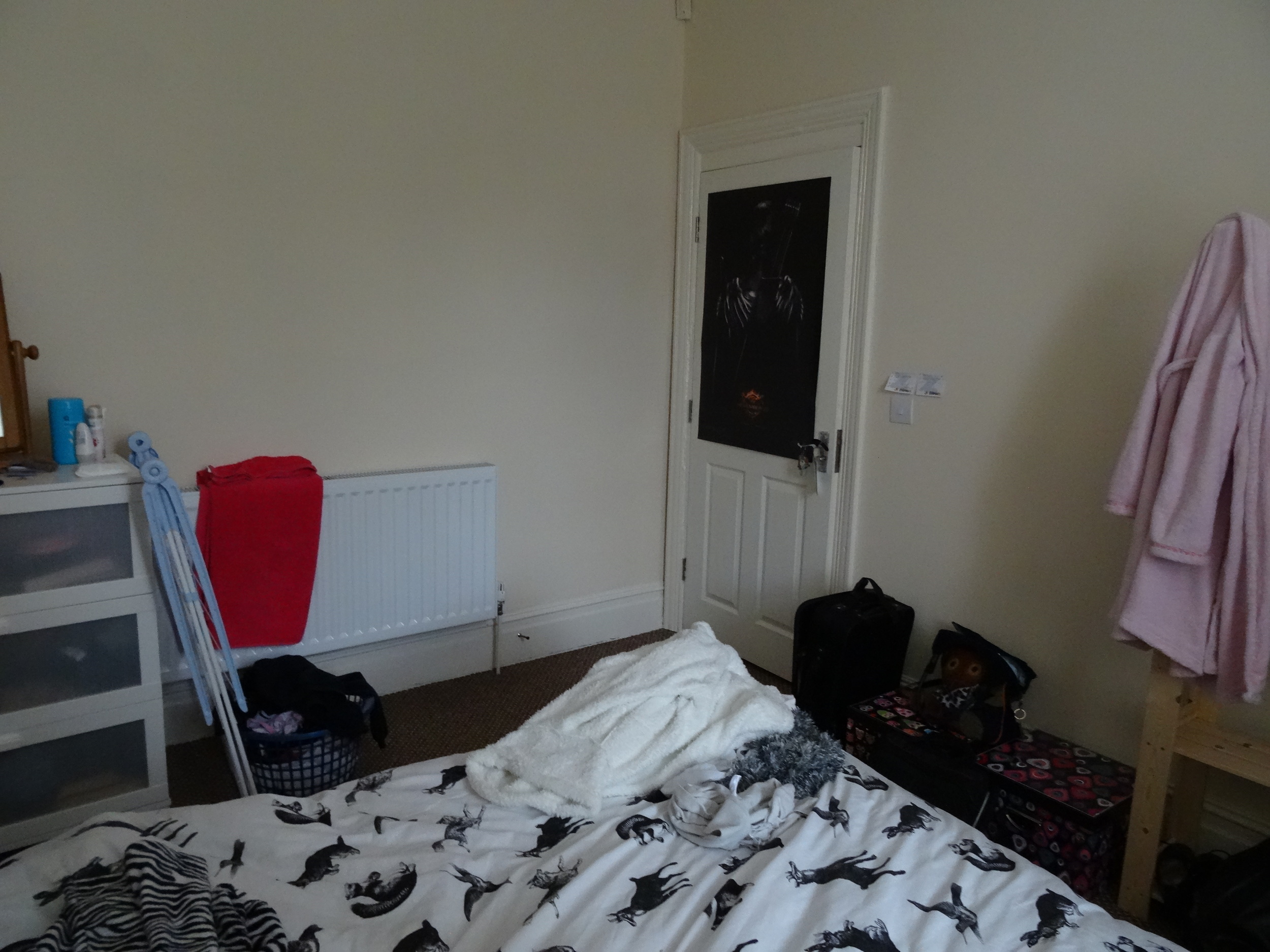
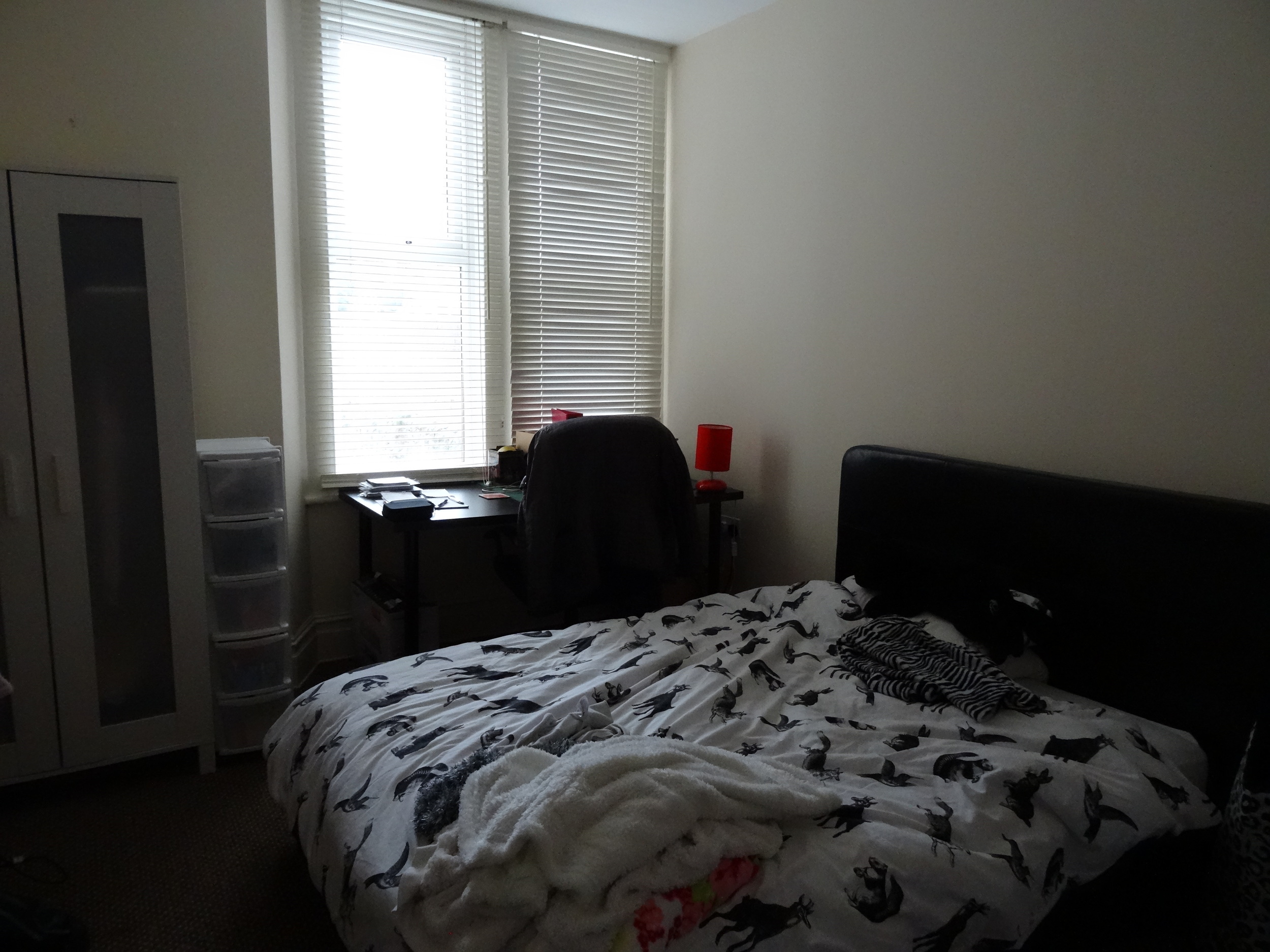
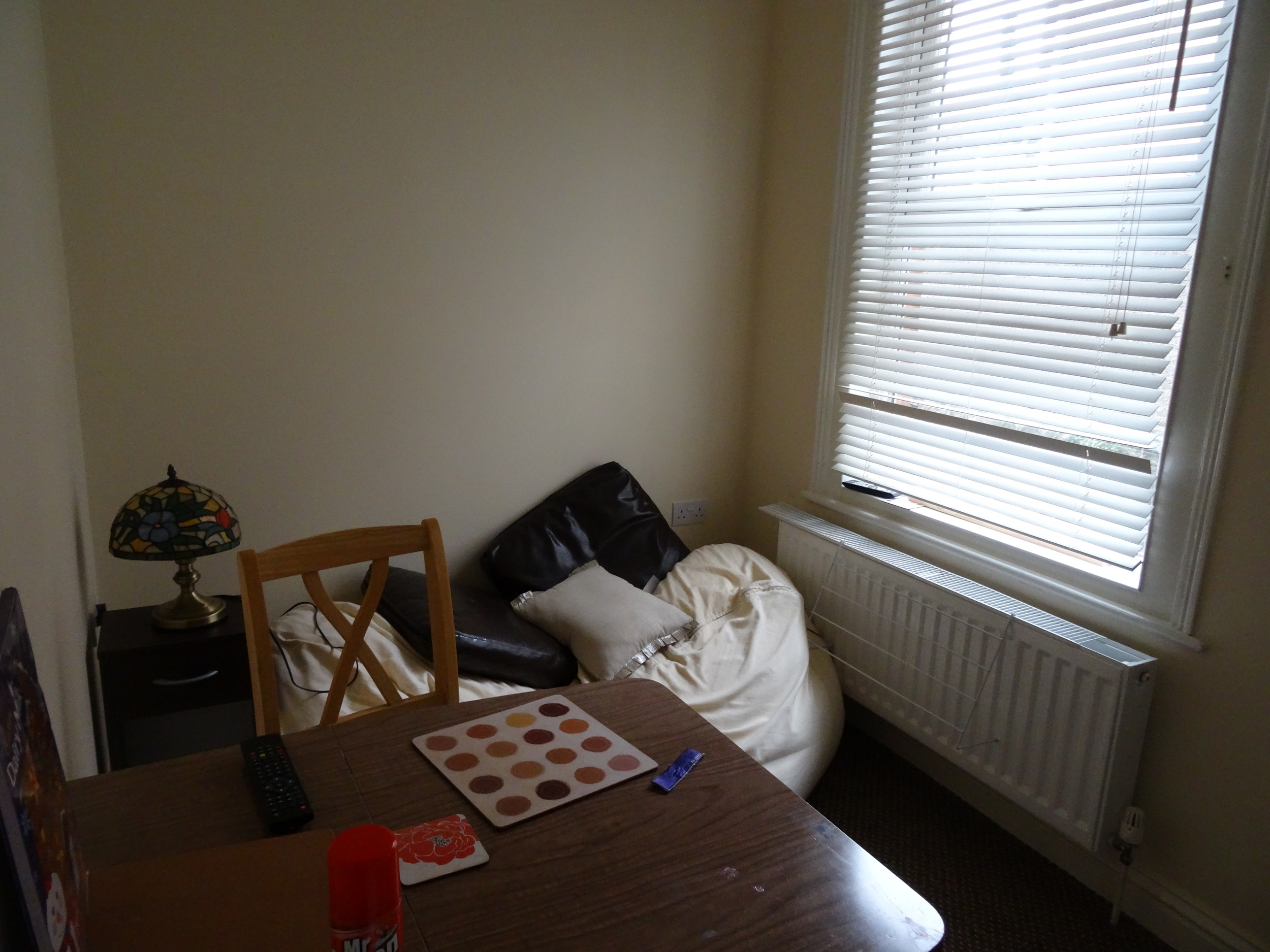
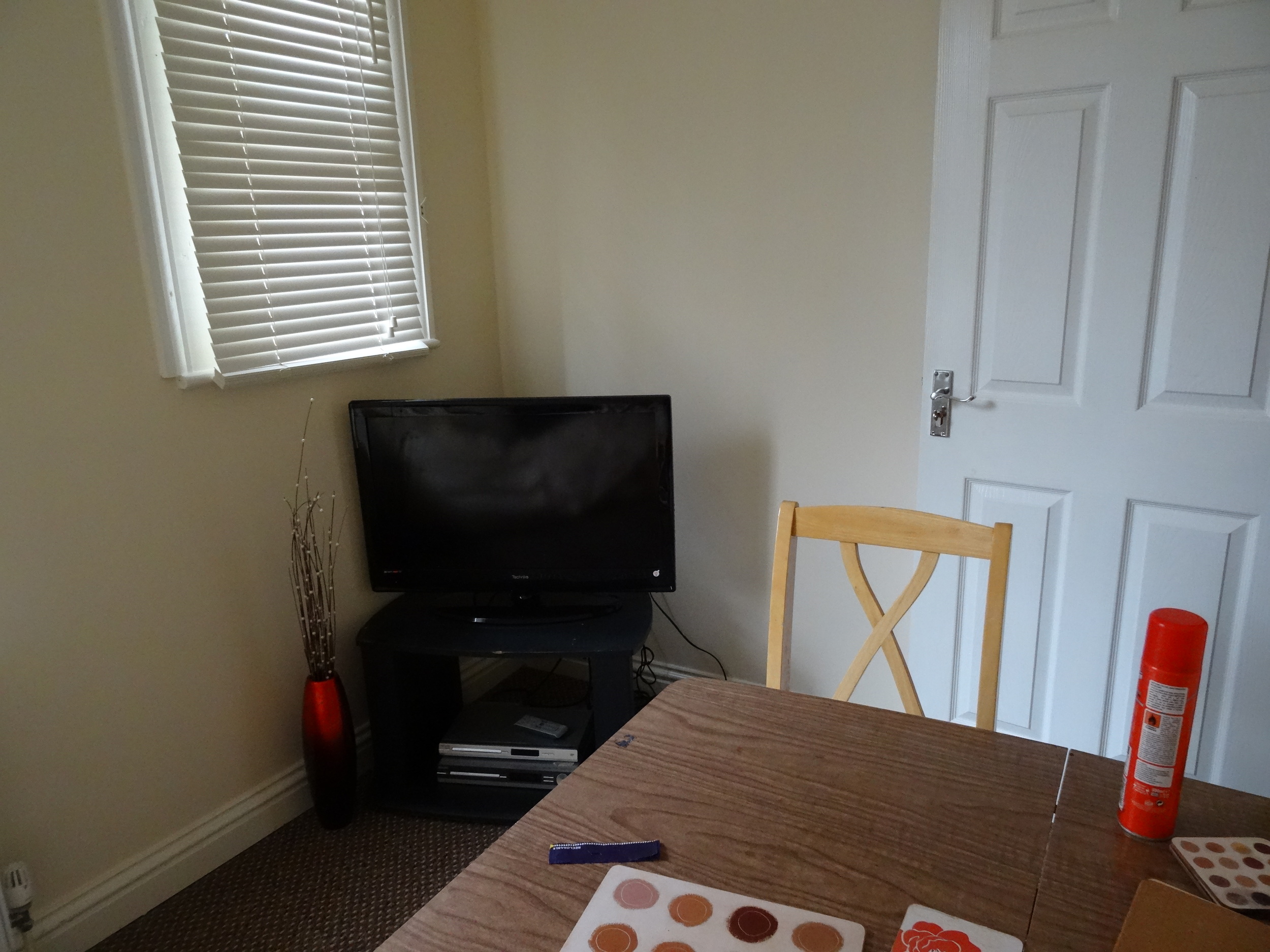
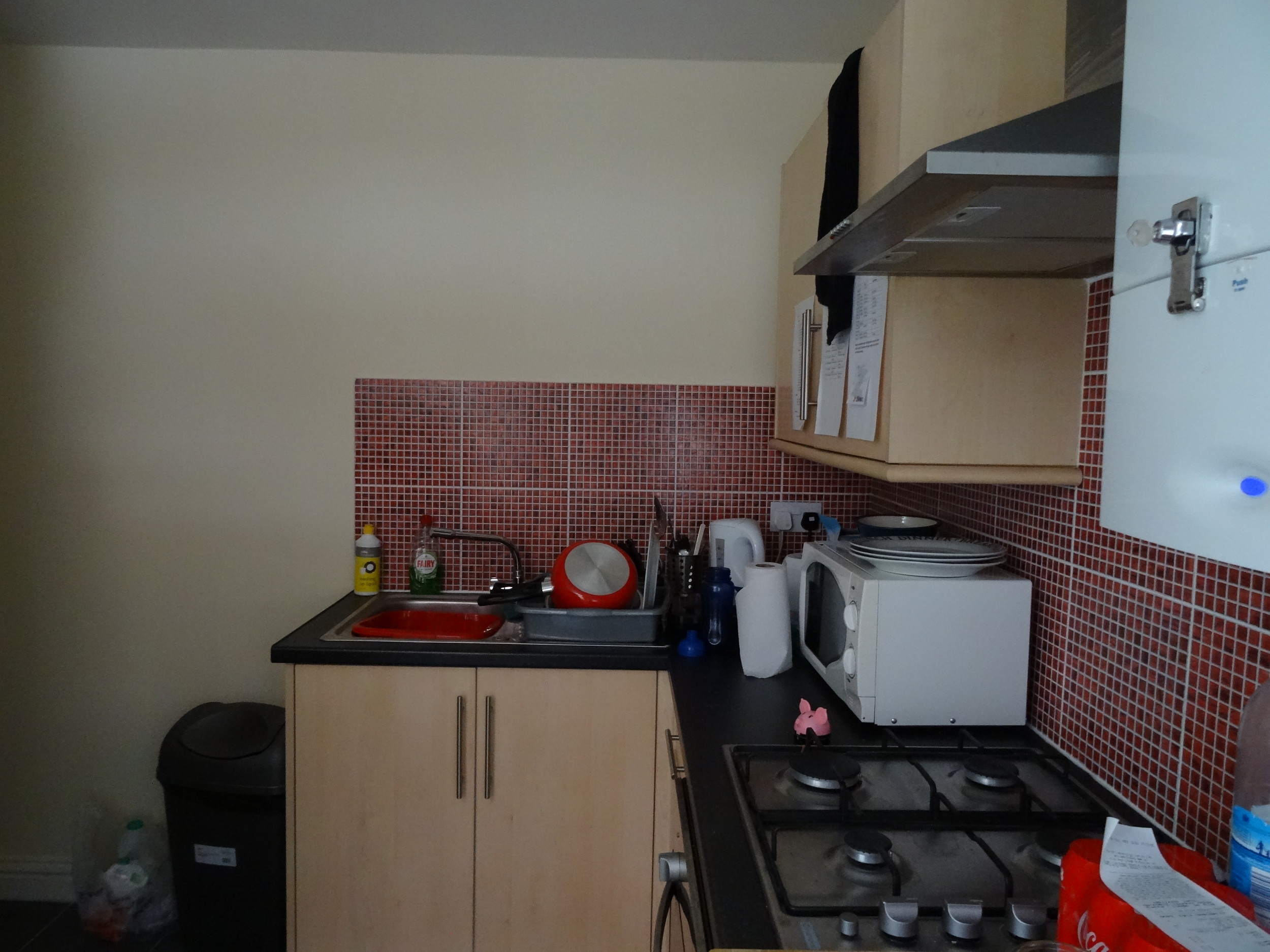
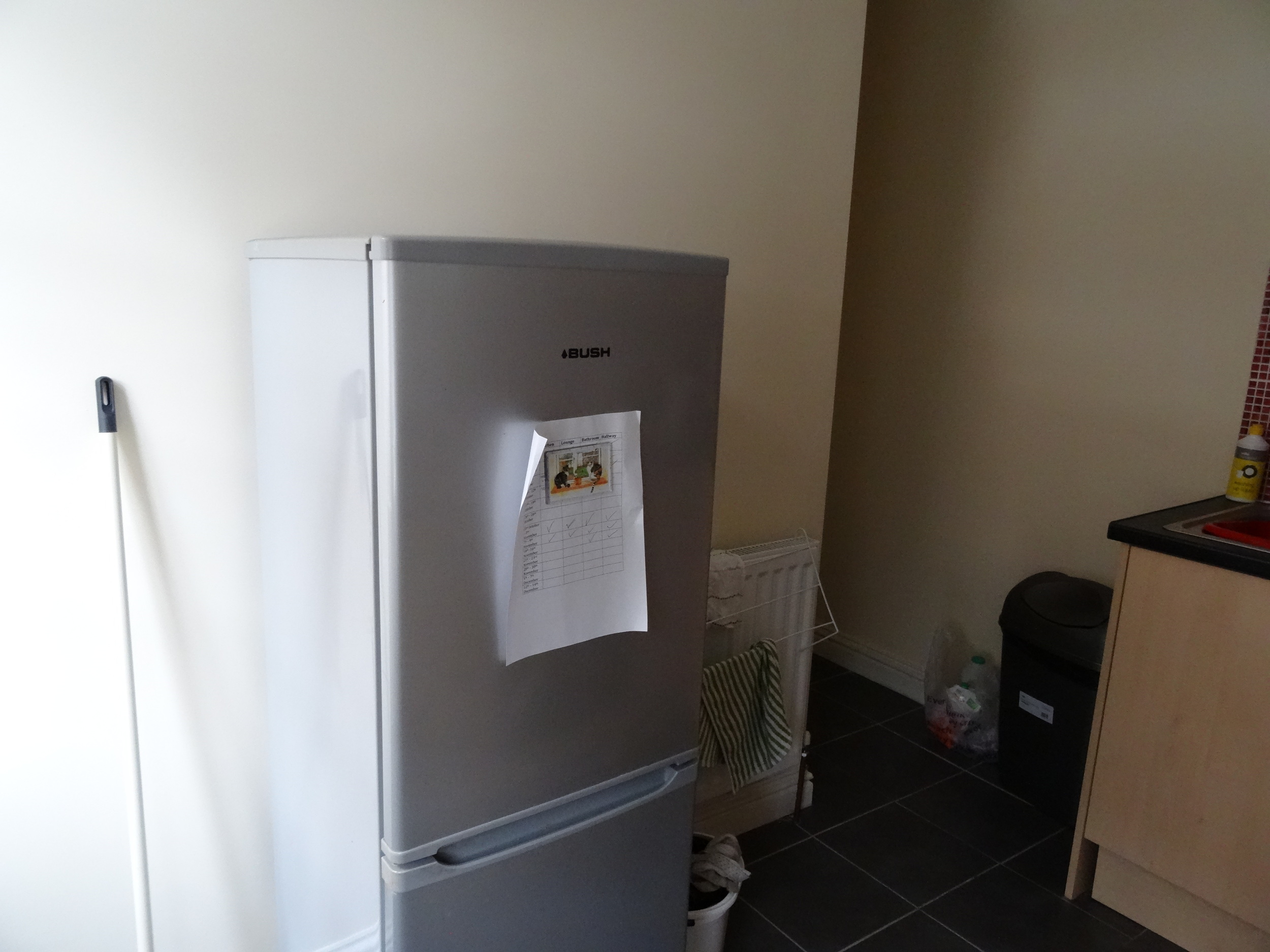



Here are my costume and props for The Owl. The owls are significant in the film because not only the owl's presence in my character's life, they depict the cultural impact on the fashion trend and my love for them. The cue cards and post-its are the alternative way of communication, inspired from two non-dialogue short films (look further on Research for 'The Owl'). The mugs are for the kitchen scene where my character makes tea for herself and then later for the owl.
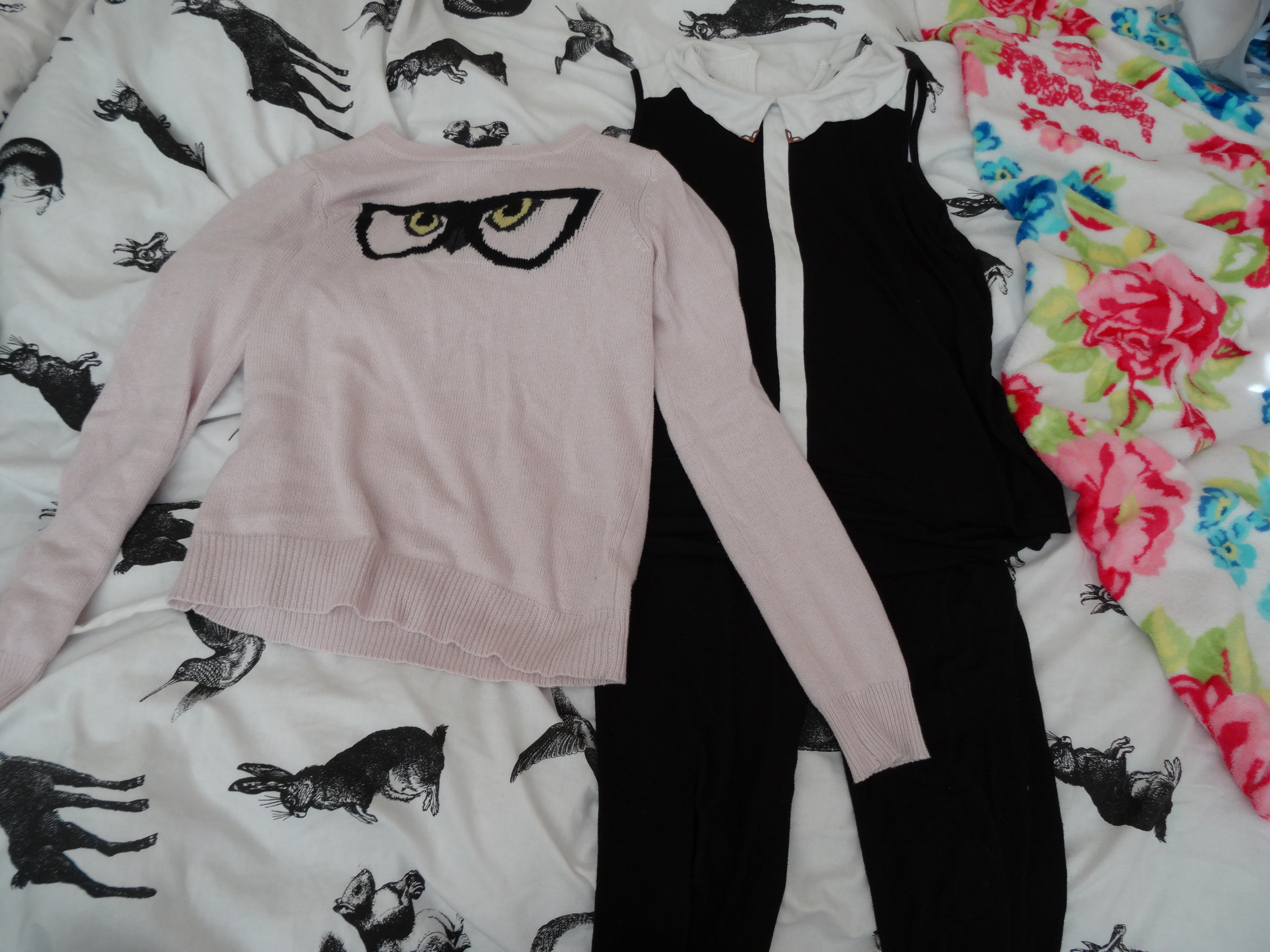
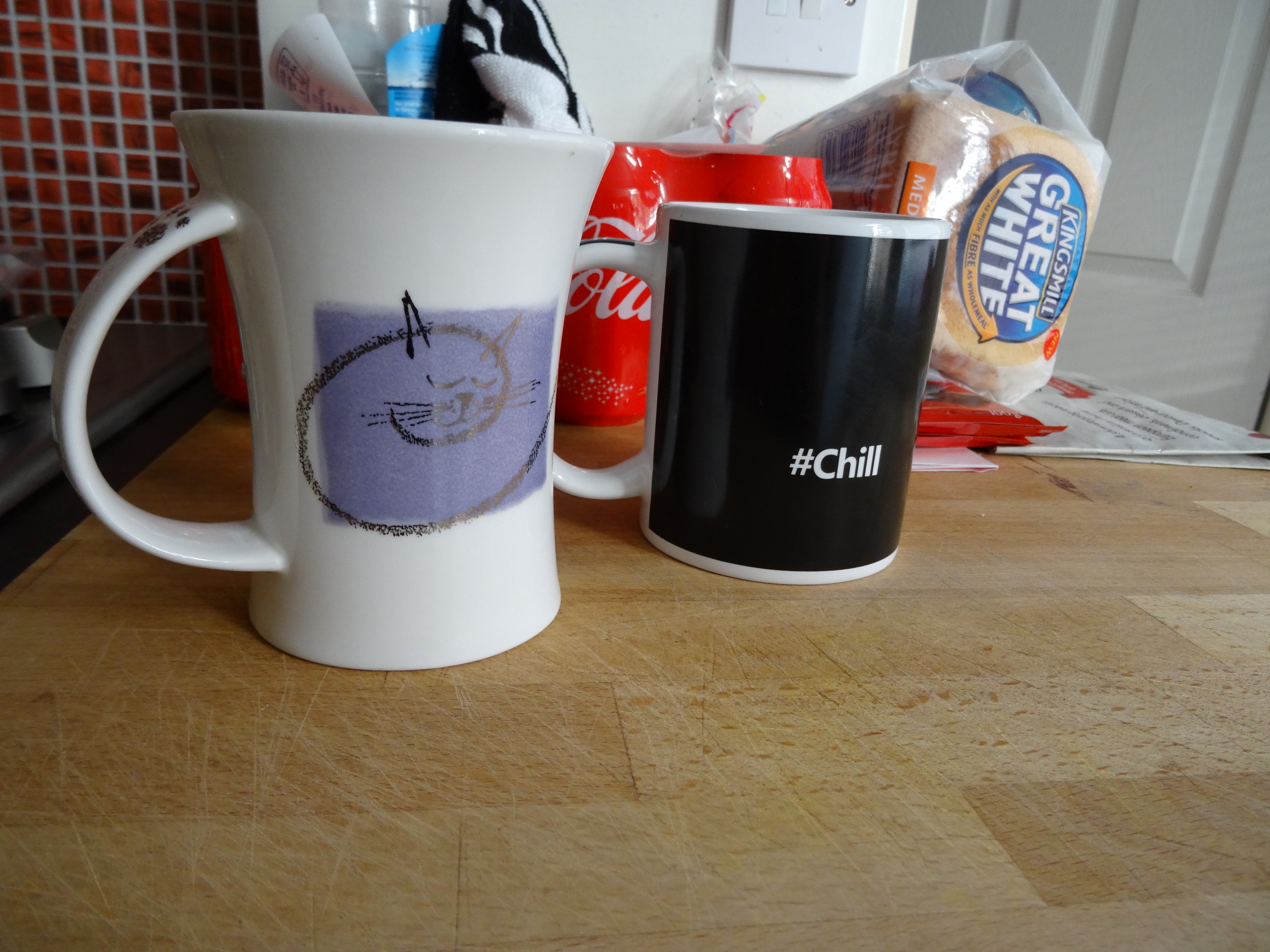
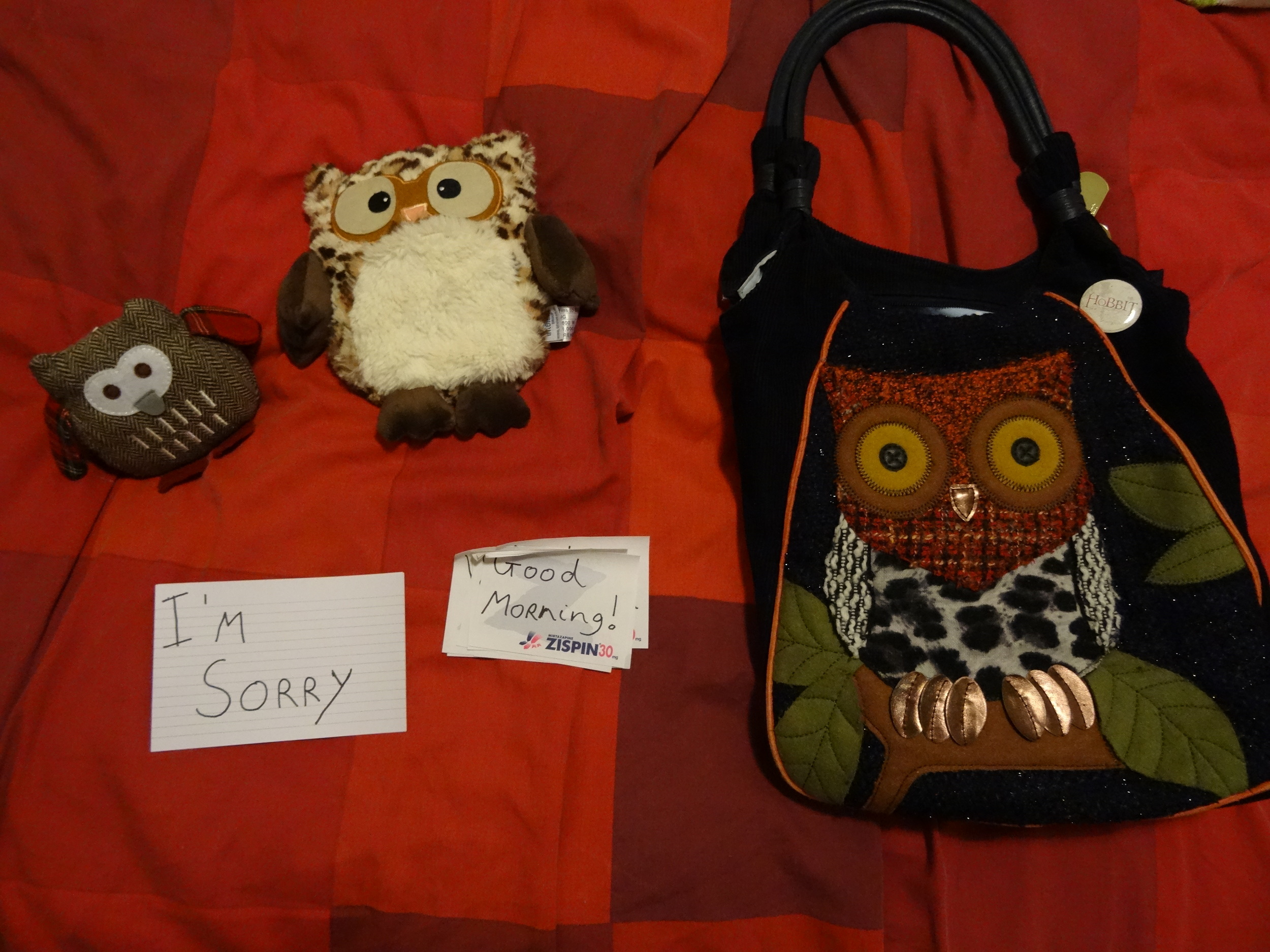
Research for 'The Owl' film
I have done some research by watching non-dialogue short films and other films, which influenced my film The Owl. A non-dialogue film should not have any dialogue or human voices however it can have ambient sound and sound effects. I looked at Films short website, which featured short films from around the globe and there is a page called Short Shorts, a selection of short films under five minutes. There are several non-dialogue films, both animated and live-action, but one of them intrigued me the most which is Post-It Love (Si & Ad, 2009).
Dir. Si & AD / UK / 2008
Shy girl meets shy boy in the office, and they find a new way of expressing their affection in this endearing film.
There is another film, similar to Post-It Love, called Signs (Hughes, 2008). Patrick Hughes, who directed Signs, have recently directed an all-star ensemble film, The Expendables 3 (2014). What I really like about Signs and Post-It Love is that they use an alternative way of communication
Mark (Andrew Lincoln) shares his feelings with Juliet (Keira Knightley) via cards.
In a scene from Love Actually (Curtis, 2003), one of my favourite British films, the way Mark expresses his feelings and the music of Silent Night depict emotion which the audience would sympathise him.
The ending of John Lewis Christmas Advert (below) influenced the ending of The Owl because the music depicts the same way as the Love Actually scene does, and both featured a human protagonist give a thoughtful gift to make its animal friend happy.
The inspiration of these shots I filmed were from the shots in The Station Agent (McCarthy, 2003) when Fin started to settle down in an abandoned depot he inherited from his deceased friend.
Richard (my tutor) suggested me to use 10-22mm lens to make the close-up of the owl look big. This was inspired from the close-ups of the dog in My Wrongs 8245-8249 and 117 (Morris, 2002). Look at these close-ups from 4:30 to 4:50, they depict that a dog is becoming an annoying influence which the eponymous character in my film would become as well.
Finally, in the kitchen scene when the woman makes tea, there are jump cuts which featured in French New Wave films including Breathless (Godard, 1960). Here is the example from this scene from Breathless, from 0:55 to 1:01. They are one of the more unconventional film techniques and depict the pace and time passing by. The reason for using this editing technique is, not only it depicts a look of an independent or unconventional film, to save time on filming rather than doing an continuous shot of the woman making tea.
Difference between online and offline editing
When I looked at the post-production comapany, Films @ 59, based in Bristol, I found it very confusing that there are online and offline editors working there. I have no idea what they do in two different roles, however, I have researched the definition on online and offline editing through several websites such as Wikipedia and mediacollege.com. Online and offline editing is very common in TV and other media projects which they hardly mentioned in film because of the blurred boundaries. I noticed that all of the offline editors working for Films @ 59, are freelancers.
Offline editing is actually a rough or draft cut of the project by editing a low-quality footage together, so the main editor and possibly director could get ideas for the final cut. Another role for an offline editor is to create an edit decision list (EDL) which is similar to log sheets (a list of shots). It is very important because once the offline editors done a list of the shots they put in a rough cut, the online editor would follow and make changes in order to edit a final cut. Offline editors can also make creative descisions; shots, cuts, dissolves, fades, etc.
Online editing is a final cut of the project by editing a high quality footage together. Online editors would reconstruct the final cut based on the EDL, created by the offline editors. They will add visual effects, lower third titles, and apply color correction. I noticed that the reason the offline editing has to be done first is because it is cheaper to use in a long period of time in contrast to online editing.
Blackmagic Cameras
Jamie Stuart wrote a review on Blackmagic cameras and even filmed a short film with two of these cameras. It is interesting that he didn't use any diegetic/non-diegetic sounds but used his own score throughout his film. I think this helps for the viewers to focus on his character's emotions.
Art of the Title
Art of the Title is a website dedicated to title sequence design, spanning the film, television, conference and videogame industries. There is a detailed information on a variety of title sequences which is useful for the film analysis which I talked about on the recent post.
HBO's Game of Thrones opening titles, one of my favourite sequences, depict the locations, in the world of Westeros and Essos. The idea of locations in the sequence came from 'Dan Weiss and Dave Benioff, [who] had written a title sequence in which a raven flies from King’s Landing to Winterfell [in the original pilot script]. [The designers from the company, Elastic], did some concept sketches around that idea but when the pilot was shot, they called us in and said, “People are confused about where they are. Can you guys create little map pieces? Not a title sequence per se, but something that shows us exactly where we are when we go from place to place.”
Network | HBO Design + Animation | Elastic Creative Director | Angus Wall VFX | a52
In the opening credits of 21 Jump Street, the colours red and blue are the generic conventions of a cop/police film and there are flashing police lights behind the titles. The Eminem song 'Slim Shady' is used as the introduction to the first protagonist and it also indicates to the audience that the protagonist dresses as Slim Shady, Eminem's alter ego.
Opening scenes and opening title sequences for film analysis
There are opening title sequences and opening scenes in the Top 10 countdown, released by WatchMojo.com on YouTube. These would be helpful to use for film analysis in FdA Film and Media Production Arts.
I'll show you how to analyse the scene/sequence with film language and theories. It looks very straight-forward and interesting at the same time if you are passionate about films.
The film language are the elements that explain how the film scenes interpret or reflect to us and even the audience.
The elements are:
- Camera shot types e.g. long, close-up
- Camaera movement e.g. tilt, tracking
- Camera angles e.g. high angle, canted
- Sound (digetic and non digetic)
- Mise-en-scene e.g. setting, props, costumes, lighting
- Editing e.g. dissolve, fade in
- Performance - the most difficult to analyse in film
- Focus (deep, rack, shallow, soft and hard)
- Other elements e.g. frame freeze
The theories are:
- Auteur theory - the director use the repetitive elements, themes, character types and style in several film e.g. Alfred Hitchcock. There is a debate that the production values may or not depict the director as an auteur. For example; the collaborations between the director and those he/she worked with. The most common collaboration is between the diretor and actor e.g. Tim Burtin and Johnny Depp. Some people may argue that this collaboration would be used as a marketing tool. This means the auteur theory attracts audiences. Another example is Baz Luthermann, who had used glamour, pop music and beautiful production sets and costumes done by his Oscar-winning wife, Catherine Martin, in all of his films. But I heard some people may think he would not be an autuer due to the production values.
- Narrative - Vladimir Propp, Claude Levi Strauss, Roland Barthes
- Genre - common conventions e.g. film language, narratives and themes. For example; low angle shots, threat - monster - removal of threat plot, and theme of Good triumphs over evil/ordinary vs. extraoridinary in horror genre.
- Symbolism - relate to Roland Barthes, very important in the mise-en-scene and possibly most of the elements.
Pick the sequence/scene from any of the countdown videos below or you could pick your own favourite sequence/scene.
Think of what film language did the scene/sequence used for, and also think of the theories as well.
Opening Scene from "Inglourious Basterds" (2009) directed by Quentin Tarantino. Music: Beethoven - "Für Elise" Starring: Denis Ménochet as "Perrier LaPadite"
In Inglorious Basterds, the part where the French farmer wipes his sweat off his face, the guitar sound in the music depicts as the Western generic convention. This is very unusual for the Holocaust film but it foreshadows the film's main theme, revenge, one of the common themes in Western genre. Interestingly, Quentin Tarantino used this music in some of his films which may depict the auteur theory.
Screen 3 Productions
Screen 3 Productions is a group of small filmmakers, based in London, Bristol and Exeter. They made films mainly documentaries including 'Born to be Mild' I have seen at the Cube Cinema, and promotional films. Their films have won awards and screened in various film festivals.
https://twitter.com/screen3film
https://www.facebook.com/pages/Screen-3-Productions/141320132585926?fref=ts
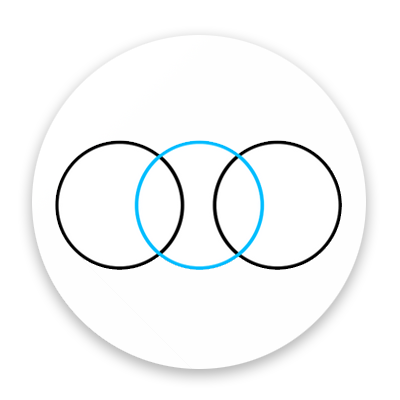



![You see my hand with a pink flower on top while Sarah tries to put my corsage on [Flickr]](https://images.squarespace-cdn.com/content/v1/51ecf957e4b0a3afa66fba4e/1421840294782-0KMYZTZ63JI5OOHTV843/image-asset.jpeg)

![Q&A with Charlie Lyne [Flickr]](https://images.squarespace-cdn.com/content/v1/51ecf957e4b0a3afa66fba4e/1421840324288-ITALM1W5PWS5ETBOU2QY/image-asset.jpeg)
![Charlie Lyne [Flickr]](https://images.squarespace-cdn.com/content/v1/51ecf957e4b0a3afa66fba4e/1421840352219-XMA4O3MKZE56VP742OSZ/image-asset.jpeg)


